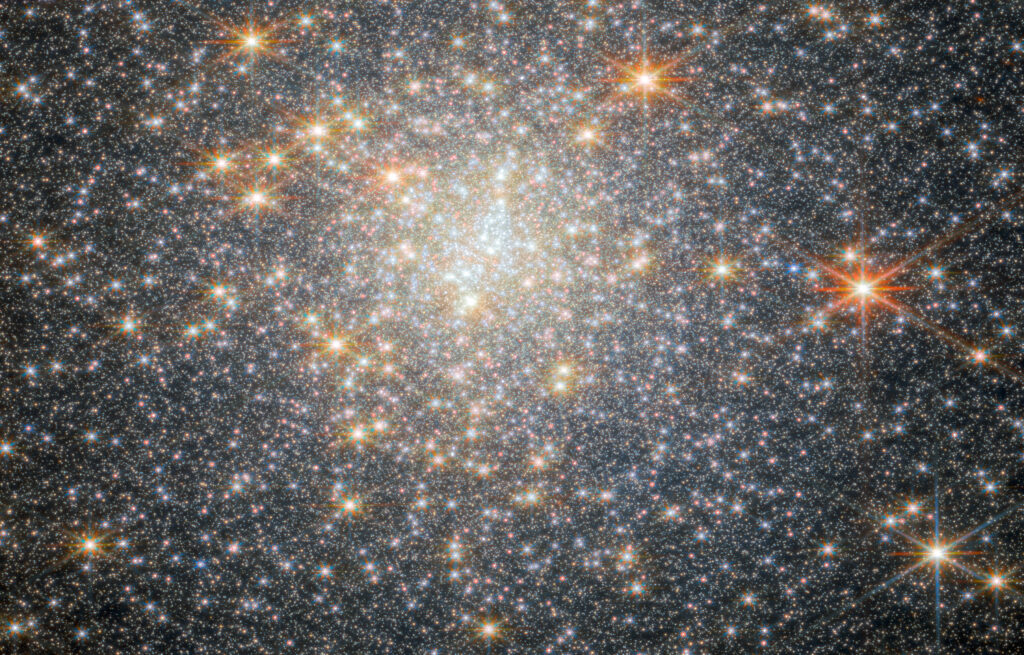The James Webb Space Telescope (JWST) has studied the globular cluster NGC 6440. The data it obtained opens up the possibility for in-depth studies of other similar objects in our galaxy.

Globular clusters are spherical formations consisting of many densely “packed” old stars connected to each other by gravity. Such objects are found in all galaxies, but most often they are located on their outskirts. They can contain from hundreds of thousands to a million stars, which are on average about one light-year apart from each other. But sometimes they can be located at distances comparable to the size of our Solar System.
NGC 6440 is no exception. The cluster is located at a distance of 28 thousand light-years from Earth in the direction of the constellation Sagittarius. Compared to other clusters, it has a fairly high level of metallicity. NGC 6440 has formed and is located inside the galactic bulge, a dense, almost spherical compaction of old stars in the inner part of the Milky Way.
JWST photographed NGC 6440 in 2023 using the NIRCam. The image was taken as part of an observation program aimed at studying pulsars in star clusters. Pulsar is a rapidly rotating neutron star with a powerful magnetic field, the poles of which are sources of electromagnetic radiation. Since such stars rotate, we perceive their studies in the form of short flares or pulses. The rotation speed of the fastest pulsars is more than 716 rotations per second, but theoretically it can reach 1,500 rotations.
The data obtained by JWST indicate that NGC 6440 stars are rich in helium and oxygen. These results open up the possibility for future in-depth studies of other clusters in the Milky Way bulge. They were not feasible with other telescopes due to the high density of stars, as well as clouds of interstellar dust between the clusters and the Earth.
Earlier we wrote about how James Webb discovered the atmosphere of a lava exoplanet.
According to https://esawebb.org
Follow us on Twitter to get the most interesting space news in time
https://twitter.com/ust_magazine


